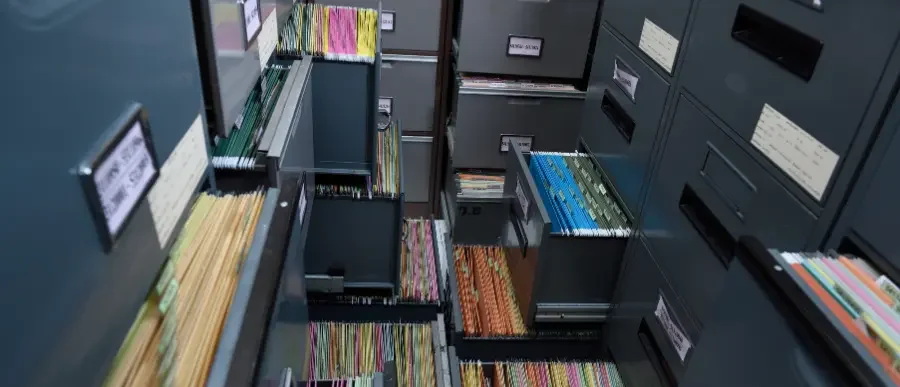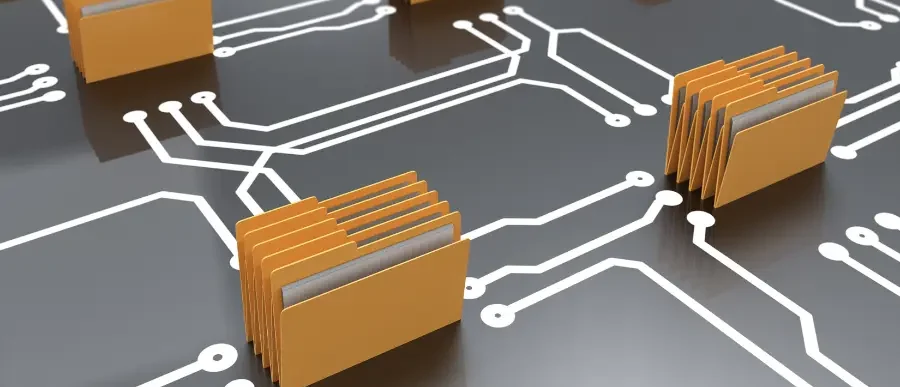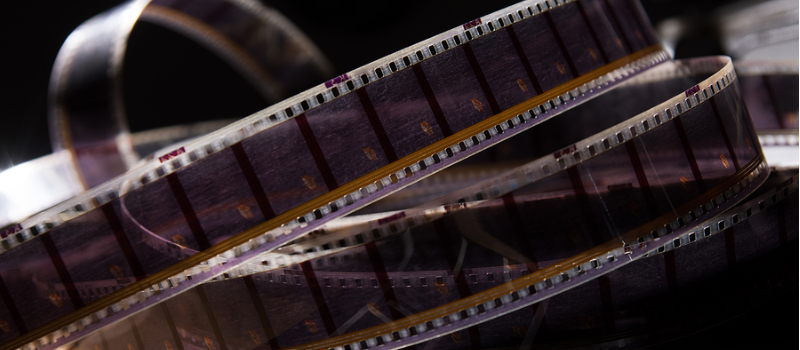
Generally categorized as microfilm along with microfiche and aperture cards, microfilm is a series of microsized images stored on a reel of photographic film.
The images are roughly 1/25 of the original page size, and besides having a capacity of 2,000+ images, microfilm can also have a shelf life of 500 years if stored and cared for properly—making it not only a space-saving storage option, but sustainable as well.
Watch the video or read the transcript below for more information on these three kinds of microforms.
Video Transcript
Different Microform Types
| Microfilm | Microfiche | Aperture Cards |
|
|
|
Microfilm
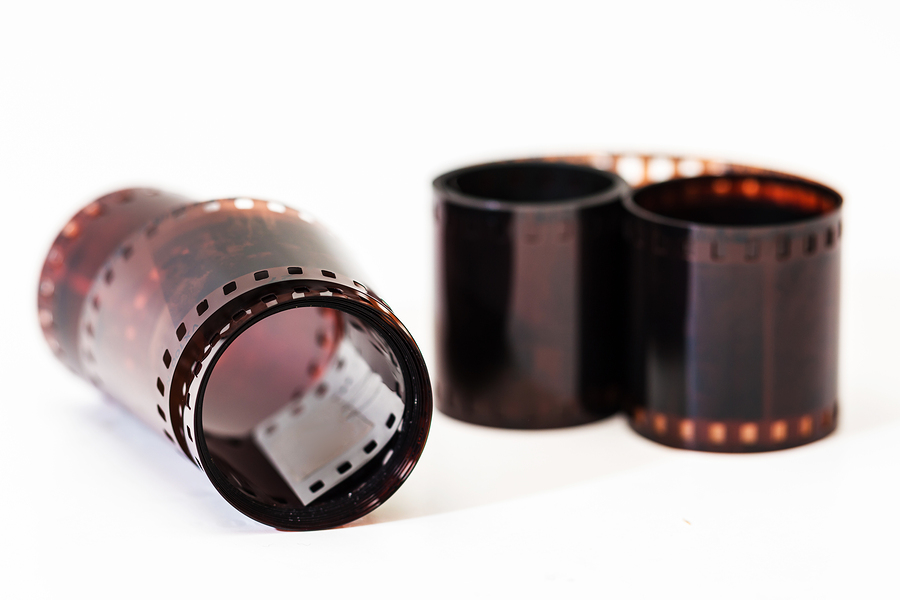 Microfilm is similar to a movie reel. Used to store tiny micro-reproductions of files on a roll of photographic film, microfilm typically comes in two sizes—16mm and 35mm.
Microfilm is similar to a movie reel. Used to store tiny micro-reproductions of files on a roll of photographic film, microfilm typically comes in two sizes—16mm and 35mm.
The typical microfilm roll can store 2,400 letter-sized pages, or 600 drawings and other large images.
Microfiche
Unlike how microfilm rolls are a series of images, microfiche is a flat microfilm sheet. Usually 105mm x 145mm or 4” x 5”, images are organized on a sheet as a matrix. Microfiche sheets can store roughly 98 letter-sized pages.
Aperture Cards
Also known as Hollerith cards, aperture cars can only hold 1 image and are the simplest microform storage option. Hole-punched with a 35mm microfilm chip embedded, the card is coded with indexing information for the image.
How Microform Is Used
As the highest capacity option, microfilm is often used as a backup strategy due to the small size of the microfilm images. Typically, 16mm rolls are used for letter-sized pages (2,400 max), while 35mm rolls are used to store engineering drawings (600 max).
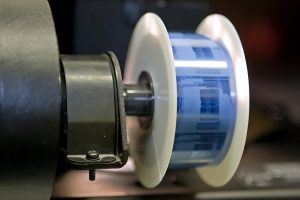 Microfiche is like a smaller version of microfilm. Microfiche sheets can be used like a micro-file folder to store and keep related images together. Because of its size, microfiche is typically used for standard page images.
Microfiche is like a smaller version of microfilm. Microfiche sheets can be used like a micro-file folder to store and keep related images together. Because of its size, microfiche is typically used for standard page images.
Finally, aperture cards are the most basic and smallest microform storage option. These cards only have a capacity for a single image. With a 35mm chip, aperture cards are ideal for storing engineering drawings or other large images.
Microform Scanning: From Microfilm to Digital Files
When it comes to data you need to use regularly, an alternative to extracting and viewing microfilm is to scan it and manage files digitally. There are multiple benefits, including:
- Saving time & improving access speed
- Tagging & indexing files for better organization
- Quickly replicating and distributing files
Mixed Media Shredding for Old Microfilm
When microfilm reels are scanned or need to be disposed, you should always be sure to use mixed media shredding to destroy the old physical copies.
Besides cutting the odds for theft or a breach in half, proper microfilm disposal is a key part of ensuring compliance with data protection laws like HIPAA, FACTA, and the GLBA.
In Need of Microfilm Storage & Scanning?
Record Nations partners with secure and reliable storage and scanning providers across the United States. To get started finding the one best for your storage or scanning needs, fill out the form on the right or give us a call at (866) 385-3706 for a free, no-obligation quote from services in your area.





